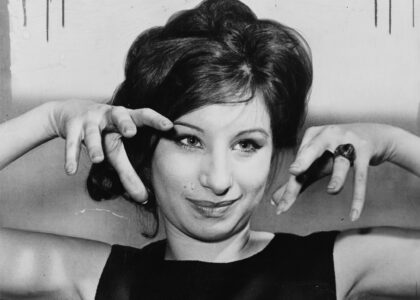People who know me won’t be surprised to hear that I don’t listen to Joe Rogan’s podcast. And Joe Rogan probably doesn’t care. And you know what? He’s exactly right.
Powered by RedCircle
For starters, I don’t know that Joe and I have a lot in common. I mean, yes, we’re both white guys in our middle 50’s, but that’s probably it. Joe likes Ultimate Fighting. I like science. I’ve lived about two thirds of my adult life in Canada. I’m not sure Joe would be able to draw the borders of Canada on a map and even if he could, I don’t believe he takes Canada very seriously or pays it much respect. And guess what? That’s okay. I don’t need Joe Rogan to like me. And Joe doesn’t need me to like him. I could write Joe a ten-page diatribe on the myriad ways that I find both him and his podcast objectionable and if Joe were smart, he’d look at those ten pages and say, “I don’t care,” and throw it in the trash. Because that’s exactly what he should do.
Why?
Think of it another way.
You have a friend who’s a vegetarian. Not a vegan, but a vegetarian. The two of you go to Pizza Hut. The server comes over and says, “the special tonight is a large Meat Lover’s pizza for $9.99.” Your friend says, “Oh, but I’m a vegetarian.”
In that moment, the server has two choices: First choice, a brief yet awkward silence followed by a tortured, heartfelt apology, then a retreat to find the manager who will promise that going forward, to avoid offending any other vegetarians, the restaurant will stop serving the Meat Lover’s pizza.
The second choice has the server immediately look at your friend and say, “That’s okay, that pizza’s not for you.” And thankfully, because it’s Pizza Hut, the server can follow up with, “But we do have a ton of other options that might work for you, including the Veggie Lover’s pizza.” And although it has nothing to do with the point of this discussion, if that server is really good at their job they could also throw in, “I’ve tried that one myself and it’s one of my favorites.”
But the most important part is making peace with the idea that if you’re a vegetarian, the Meat Lover’s pizza is not for you. And that’s okay. It’s not up to Pizza Hut to change the Meat Lover’s pizza. It’s up to the person who walked into the restaurant to either find something on the menu they do like, or go somewhere else. Because if Pizza Hut did an effective job at figuring out their niche, they’re okay with the idea that not everyone is going to love everything on their menu.
Figuring out a niche is a big deal, no matter what you’re getting into. I’ve been involved in an unsettling number of conversations on social media lately where someone will jump into a discussion group for entrepreneurs and ask a question like, “I’ve just taken over a 3,000 square-foot space downtown that I got for an amazing deal. What business should I put in there?” I’m not making that one up. That question was actually asked.
Niches are a big deal in the podcast space right now; guru after guru seems to be hanging out their shingle based on their ability to help new podcasters “niche down”, and for whatever reason, the idea seems to meet with some resistance.
Maybe podcasters are just used to being the underdogs. Or being thought of as “less than”. Or whatever it is that leads us to feel the need to endlessly tweak, mess with and otherwise “fix” our shows. Or maybe it’s that because from a content perspective, podcasting has virtually no barriers to entry, and so we didn’t invest enough time doing the market research that is such a critical piece of launching virtually any other venture that you’re hoping to see succeed.
Let’s zoom in on the podcasting element of this for a second, although it’s very easy to apply these same principles to any pursuit or business, from choosing a sport to opening a car repair shop.
I asked one podcaster whether they had defined their target audience, and they proudly answered that they’d gotten very specific. They’d painstakingly arrived at the conclusion that their audience was 35 year-old women.
…and that was it.
I’m going to introduce you to two fictitious women to help illustrate why that’s grossly insufficient, Mary and Brighton. Both women are 35, and this podcaster was going to do a show that would appeal to both of them.
Let’s examine that for a beat. Mary lives in Cookeville, Tennessee. Brighton lives in San Francisco. Just on that basis alone, you already start to get the idea that while those two 35 year-old women will have some things in common, there will probably be exponentially more things they don’t have in common at all.
So picture the Venn diagram for Mary and Brighton. And picture that tiny little oval in the middle where the two circles overlap. And compare that to the massive amounts of circle that don’t. If this podcaster is truly going to only drill down as far as doing a show for 35 year-old women, they’re aiming for the tiny little spot where the circles intersect. And to avoid alienating either one of them, they’re going to stay away from anyplace where there’s no overlap. The podcast that will come out as a result will be almost entirely superficial, won’t make any attempts to connect on any real level with either woman, so as a result won’t connect with either of them, and will become completely disposable. The host, who is working their ass off to stay in that tiny little area of overlap, will wonder why they never get any engagement, why their download numbers plateau, and why the show has become less fun to do. And about sixteen or seventeen episodes in, they’ll quit and either start a new podcast, or stop podcasting altogether.
It’s the same for the car repair place. You want to open a garage, huh? Great. Did you know that in Mary’s hometown of Cookeville, Tennessee, there are already at least twenty other garages? Everything from Midas and Firestone to Big Bob’s over on West Broad. So if you’re going to open a garage there, you’re probably looking at maybe grabbing 4 or 5 percent of the local car repair market.
But what if you niche down?
What if instead of opening another garage, you open a garage for high-end cars? Maybe your garage only services Italian cars – so Fiat, Maserati, Lamborghini, Alfa Romeo and so on. Now, I’m not saying a place like that would catch on in Cookeville, but suddenly, instead of just being another one among the twenty, you can focus on being the ONE that gets the call when the Cizeta hits the fan. And by virtue of being the one, you can also charge more than the guys at Midas, because you offer a super-specialized service.
What if that podcaster niches down, and instead of 35 year-old women, they target 35 year-old women who are married to men that are addicted to Star Wars? And let’s be honest, at that point you’re probably done, because them streets might just be paved with gold – especially if you ditch the 35 year-old thing altogether and push those boundaries out to include, say, women 35 and up. “On next week’s show, we’ll talk to a woman whose fiancé showed up at their wedding dressed as Chewbacca.” The possibilities are endless. You might also find you’re getting a higher CPM than average, because you’ve got a well-defined audience that isn’t likely being duplicated by any other show.
In most cases, I recommend getting even more specific than that. For podcasters and radio DJs alike, I think the gold lies in talking to one person. Yes, there might be three hundred thousand people listening right now, but your focus is on one of them. If you do this part right, you know exactly who they are. Whether you call them the avatar for your show, your ideal listener, your target audience, whatever you want – define with agonizing specificity who they are. Why? Because once you know who they are, the job of talking to them requires about one tenth of one percent of the work that’s required if you’re trying to talk to everyone. At one station I worked with, we did a complete demographic and psychographic profile of our ideal listener. We named her. By the way, her name was Judy. We knew Judy’s job, how many kids she has, what those kids do, what kind of car she drives, we knew everything about her. Then we just did our shows for Judy. We even had a life-sized cardboard cutout of a model we’d hired that we thought embodied her. And everything the station did had to pass through the filter of, “Would Judy like this?” And as long as the answer was, “Yes”, then we knew we were on course. Judy was our friend. Someone we enjoyed talking to, and someone we never wanted to let down.
Or, you can keep trying to talk to everyone. Which ends up translating into connecting with no one. And never having fans. Just casual listeners who might not even notice, never mind miss you, when you’re gone.






